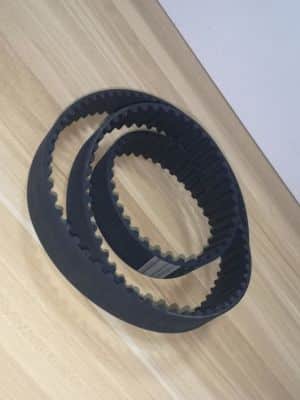FIND OUT WHAT A CAM BELT IS AND WHEN TO REPLACE

The cam belt, also known as the timing belt, is an important component of your car’s engine. But what exactly does it do, when should it be replaced, and what happens if it breaks?
What exactly is a cam belt?
The cam belt in your car is an essential component of the engine. The cam belt is made of tough composites like Kevlar and polyurethane, and it has teeth on it to keep the camshaft and crankshaft in sync.
What exactly does a cam belt do?
A cam belt or timing belt’s primary function is to control the timing of your vehicle’s internal combustion engines. It regulates the timing and sequence of when the cylinder valves open and close. To accomplish this, it ensures that the crankshaft and camshaft rotate in unison.
- The camshaft of the engine controls the valves, which allow fuel and air to enter and exit the engine.
- The crankshaft simultaneously moves the pistons up and down.
- These two actions must be performed in unison.
- If the timing is off, valves, pistons, and other engine parts may be damaged.
Cam chains vs. cam belts
The material is the primary distinction between a cam or timing belt and a timing chain. Timing chains, unlike cam belts, are made of metal.
Timing chains are typically housed inside the engine and lubricated by engine oil, whereas cam belts are typically housed outside the engine. However, some manufacturers are now using “wet belts,” which run internally in the engine oil like cam chains.
Cam chains last longer because they are made of a stronger material. Cam belts, unless they are “wet belts,” can dry out and crack over time if not replaced.
Is your vehicle equipped with a cam belt or a chain?
The make and model of your vehicle determine whether it has a timing belt or a timing chain. Most BMW and Mercedes vehicles, for example, use cam chain engines.
Check your owner’s manual to see if your vehicle has a belt or a chain.
When should the cam belt be replaced?
There is no hard and fast rule for when to replace your cam belt. It is determined by the make and model of your vehicle, as well as how frequently you drive it. It will usually need to be replaced more than once during the life of a vehicle.
Timing belts are typically recommended to be replaced after a certain number of years or miles. This could range from 40,000 to 100,000 miles, or 4 to 5 years.
Check your vehicle’s owner’s manual to see what the manufacturer recommends.
Signs that your cam belt needs to be replaced
Your cam belt may need to be replaced sooner than the manufacturer’s recommendation. There are a few warning signs to look for, as well as some things that can go wrong:
Noises coming from the engine
Any unusual engine noises should be investigated immediately. Cam belts don’t usually give much warning before failing, but a rubbing sound coming from the belt cover area is an indication that it’s about to fail. If you hear it, turn off the engine and contact a mechanic.
The vehicle will not start.
If your car won’t start, it could be due to a cam belt issue. If the cam belt is damaged, the camshaft will not rotate when the crankshaft rotates, and the car may not start at all.
If you are unable to start your vehicle, please contact us for assistance.
Causes of cam belt failure
The auxiliary belt is one of the most common causes of cam belt failure. If the aux belt deteriorates and shreds, the fibres become trapped beneath the cam belt as both run off the crankshaft pulley. This usually causes the belt to jump or fall off.
Because the cam belt also drives the water pump in many cars, any problems with it can result in failure.
Cam belt deterioration
Over the course of a car’s life, the cam belt can wear out. Because getting to the cam belt on many cars can be difficult, we always recommend taking your car to a mechanic if you’re unsure. Follow your manufacturer’s servicing schedule to increase your chances of detecting any problems.
What will happen if the cam belt fails?
It’s always a good idea to have your cam belt checked as part of routine car maintenance or to take it to a garage as soon as you notice a problem. If you leave it and the cam belt completely snaps, you’ll have a much bigger problem.
- It could be very dangerous if the cam belt snaps while you’re driving. The engine could seize, resulting in steering and braking failure.
- The pistons can collide with the valves in the cylinders, causing the engine to fail.
- A non-interference or free-wheeling engine will sustain less damage but may still sustain some.
If the timing belt snaps and causes other engine damage, the repair bill will be much higher. So, if you notice any unusual noises or a decrease in engine performance while driving, pull over in a safe location and notify us.
What is the price of a cam belt?
The cost of a new timing belt plus labour varies depending on your vehicle’s make and model. Prices for parts and labour can range from around £250 to more than £500, or even more than £1,000 for some luxury vehicles.
Make sure the quote includes the cost of the belt, tensioners, and labour. To access the water pump in some vehicles, the timing belt must be removed. So, if the cam belt needs to be replaced, some people choose to have the water pump replaced at the same time because the cam belt will be removed.
